
The 6 Best Fatty Foods
Ditch the low-fat fakes and choose fatty foods more often for a range of health and physique benefits. Put these 6 high-fat options on the menu today!
Perhaps no piece of nutrition advice was more detrimental to the overall health and weight of society as a whole than being told to slash fat intake as a means to fend off heart disease. Sadly, the low-fat craze of the '80s and '90s did little more than actually increase rates of obesity and conditions like type 2 diabetes. That's because too many people simply swapped out the high-fat foods in their diet for items pumped full of waistline-thickening refined carbs and processed sugars.
Now for the good news: Fat is no longer off the table, as people have woken up to the importance of including enough of this macronutrient in their everyday diet. Aside from its vitamin-storing and hormone-boosting traits, scientists continue to show that fat can actually improve—not worsen—your health.
For starters, because it takes your body a fairly long time to digest fat, fatty foods work hard to keep you feeling full. Fat-free gummy bears and low-fat crackers? Not so much! Getting enough dietary fat can help keep you from needlessly snacking on an excess of calories (from any food source) that your body is likely to store as flab.
Furthermore, a recent study out of the Journal of the American Medical Association showed that a low-fat diet actually works to decrease resting energy expenditure.1 Translation: eating a low-fat diet can reduce the energy you burn over the course of the day, making it increasingly difficult to lose weight! Eating a reasonable amount of high-fat foods, conversely, can actually help you trim the fat. Go figure!
You now have permission to be liberated from a tasteless low-fat diet for good. We encourage you to add these six fabulous fatty foods to your grocery cart.
Avocado 81% calories from fat
Fatty in a good way, the rich avocado should be a staple in your kitchen repertoire. The creamy, green fruit delivers a healthy dose of monounsaturated fats, fiber, and plant sterols, which provide numerous health benefits. Eating a whole avocado daily as part of a moderately high-fat diet has been demonstrated to have a profound impact on LDL ("bad") cholesterol levels even more so than a moderately high-fat diet without inclusion of avocadoes.2 This fruit—yes, it's a fruit!—has also been shown to help promote satiety, which may curb your appetite and help with weight loss in the long run.3
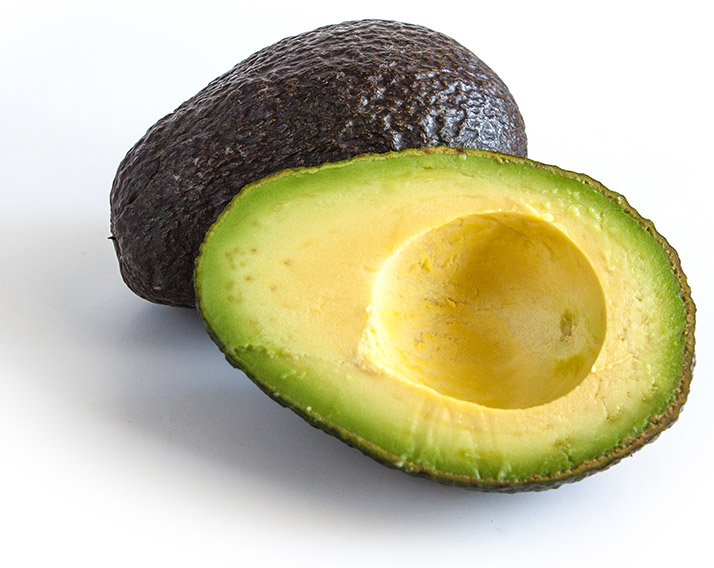
Fatten up: Add slices of avocado to salads, slather it on sandwich bread as a replacement for mayo, eat one with a spoon right out of the skin, or even blend it into a smoothie for a creamy drink.
Pickled Herring 61% calories from fat
In recent years, an eating regimen hailing from Scandinavian nations called the "New Nordic Diet" has been amassing accolades for its potential to fend off unwanted weight gain and various maladies, including heart disease. Beyond a reliance on whole grains, root vegetables, and foraged edibles (yum, moss!), a major player in this diet is fatty fish, with herring being a preferred catch of the day.
This small, oily swimmer is laced in the long-chain omega-3 fatty acids EPA and DHA, which have been credited with a number of important health benefits, including protection from a slew of cardiovascular disease related symptoms.4
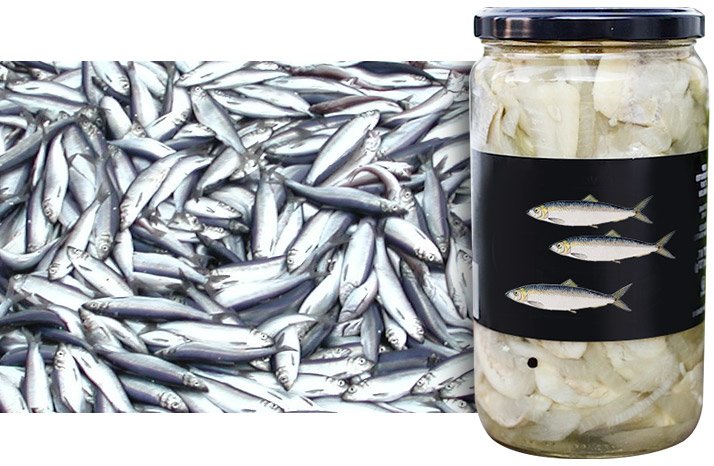
A study review performed by Swiss and South African researchers found that eating omega-rich fish like herring may even help you avoid packing on winter weight.5 People who ate fish regularly or took fish-oil supplements every day lost an additional 1.3 pounds of weight and 0.5 percent body fat over a 2- to 3-month period, compared to those who eschewed fish products. How? It's thought that the anti-inflammatory and insulin-sensitivity-boosting powers of omegas may help keep the flab monster at bay.
In addition to the pickled version, keep an eye out for kippered herring, where the fish is sliced in half (butterflied), gutted, salted, then smoked. Like their smaller cousin the sardine, these make a great lunch right out of the can!
Fatten up: Look for jars of pickled herring and tins of kippered herring in European specialty markets and most regular supermarkets. Use them in sandwiches, egg dishes such as omelets and scrambles, salads, pasta dishes, or simply scoop them up by the forkful for a protein-packed snack.
Almond Flour 79% calories from fat
Made by finely grinding up blanched whole almonds, almond flour is a great way to infuse pancakes and muffins with nutty flavor while simultaneously helping you cut back on the high amount of carbs found in traditional types of flour.
Rich in health-hiking monounsaturated fat, almond flour also delivers a wallop of vitamin E. Research suggests that higher intakes of this nutrient are associated with a reduced risk of cognitive impairments.6 You also get about three times the protein of that found in wheat flour. An increasing number of supermarket health-food sections are carrying brands of almond flour such as Bob's Red Mill.
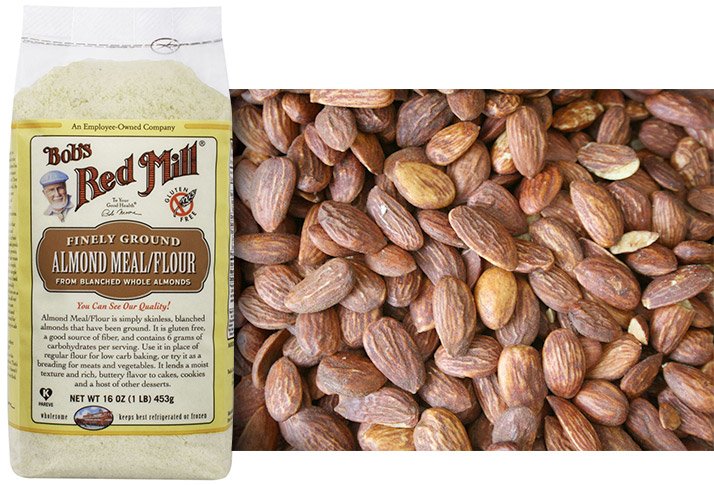
Fatten up: The next time you embrace your inner Martha Stewart and rustle up a batch of pancakes, waffles, cookies, or muffins, replace 25 percent of the regular flour with the almond version. You can also stir it into a pot of simmering oatmeal for nutty flavor and a nutritional boost. Or, use almond flour instead of bread crumbs as a coating for fish and chicken, or when making meatballs and burgers.
Coconut Butter 81% calories from fat
This Paleo favorite is made by puréeing coconut flesh into a spread with a buttery consistency. Coconut butter shouldn't be confused with coconut oil, which is made by pressing the fat out of coconut meat. The advantage of the former over the latter is the presence of some fat-fighting dietary fiber, which most fitness buffs—and everyone else—should be eating more of.
Of course, we were told for years that eating foods like coconut that are rich in saturated fat was like pouring superglue into our arteries. But new, better-designed research shows that a reasonable intake of saturated fat—not multiple slices of deep-dish pizza—isn't your heart's worst nightmare.
Case in point: A large review of studies published in the Annals of Internal Medicine found that people who ate higher levels of saturated fat were not at a greater risk for heart disease than those who ate mostly polyunsaturated fat.7 Further, an American Journal of Clinical Nutrition study determined that replacing saturated fats in the diet with high-glycemic carbohydrates such as white rice, highly processed breads, and baked goods is associated with a higher risk of succumbing to a heart attack.8
So is this your green light for a sat-fat free-for-all where every meal is a pile of bacon, sausage, butter, and all things coconut? Not necessarily. More than that, it points out that your entire diet needs to be analyzed when considering its impact on health, instead of just focusing on one item in particular, like saturated fat.
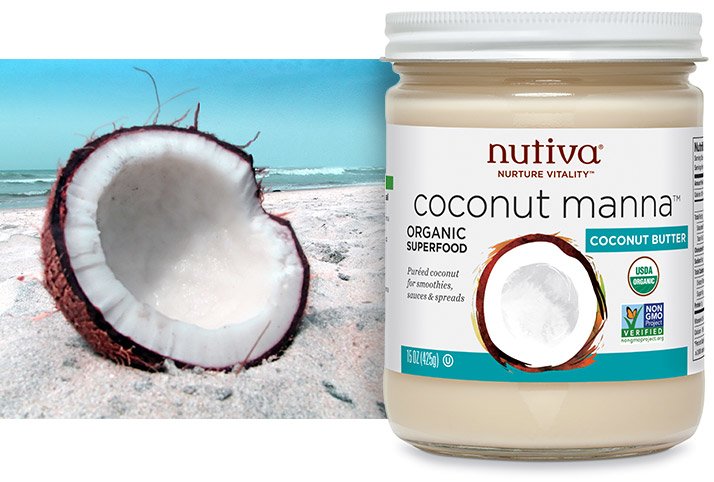
Fatten up: Spreadable coconut butter such as Coconut Manna from Nutiva can liven up your morning toast or a few whole-grain crackers come snack time. You can also stir it into a pot of warm cereal, whiz it into post-training shakes, or use it to add a tropical touch to mashed sweet potatoes.
Roquefort 79% calories from fat
Let's face it—most of the reduced-fat cheese at the supermarket generally sucks. Luckily, better taste and better health need not be at odds. France is known for low rates of cardiovascular mortality, despite fairly lofty intakes of saturated fat. Their love for awesome cheese might be one contributor to what is known as the "French paradox".
What's so special about Roquefort? Pronounced "roke-fert," this cheese is an oozy, moldy cheese that boasts high levels of anti-inflammatory compounds.9 In fact, intakes of fermented cheese such as this one have been shown to inhibit the synthesis of cholesterol and bacterial growth, key mechanisms in the prevention of cardiovascular disease.10
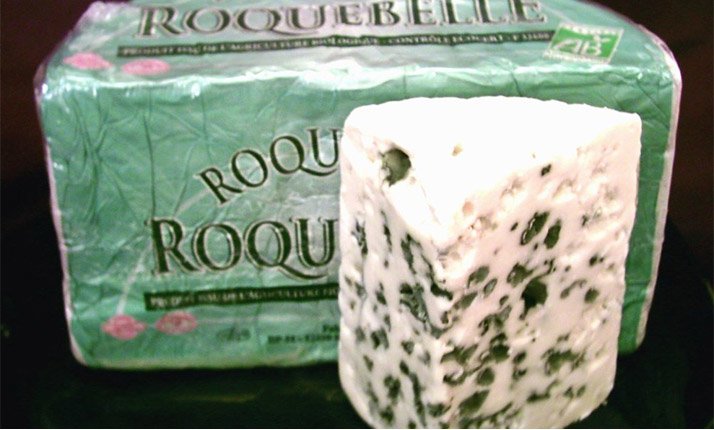
Plus, when you splurge on higher-quality cheeses like aged cheddars, pungent bleu or brie, and creamy chevre, their high fat content will mean you'll need less to feel satisfied. This helps keep calorie intake in check while still adding to your intake of muscle-building protein.
Fatten up: Opportunities to incorporate these cheeses into your diet are unlimited: sandwiches, pizza, salads, cheese plates with fruit or nuts, or just on their own. Wherever you use cheese, seek out higher-quality, full-fat stuff, rather than what is sold in plastic-wrapped singles, to make your saturated fat intake work harder for you.
Extra-Virgin Olive Oil 100% calories from fat
If you're using EVOO in your salad dressings, don't change a thing. Research conducted at Purdue University determined that sources of monounsaturated fat such as olive oil are particularly effective at bolstering the absorption of fat-soluble vitamins found within various vegetables.11
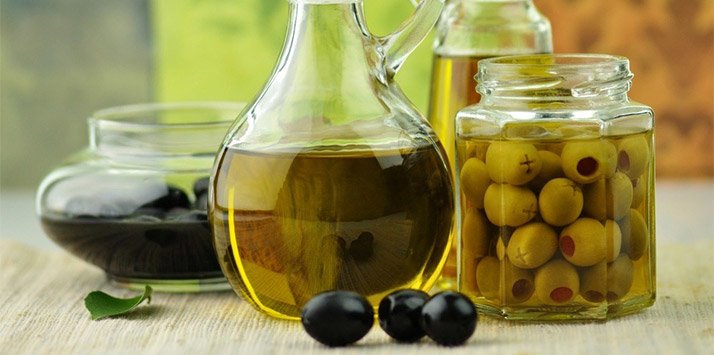
This is significant, considering that nutrients like lycopene in tomatoes and beta-carotene in carrots are important allies in the battle against various diseases, and may also help reduce muscular damage following hard workouts.
The combination of healthy fats and antioxidants in extra-virgin olive oil have a long-standing reputation of improving heart health, but dressing your greens in this oil may also help you look your best. Scientists in France found that people who consumed higher amounts of monounsaturated fat from olive oil (about 2 teaspoons daily) showed fewer signs of sun-related aging than those who consumed less.12
Fatten up: For an all-purpose salad dressing, try blending together 1/4 cup extra-virgin olive oil, 2 tablespoons white wine vinegar, 2 anchovy fillets (more great fat, plus great umami flavor), 2 teaspoons Dijon mustard, and a few pinches of salt and pepper. This makes four servings. Use one serving per meal to fatten up your greens!
References
- Ebbeling, C.B., Swain, J.F., Feldman, H.A., Wong, W.W., Hachey, D.L., Garcia-Lago, E. & Ludwig, D.S. (2012). Effects of Dietary Composition on Energy Expenditure During Weight-Loss Maintenance. The Journal of the American Medical Association, 307 (24), 2627-2634.
- Wang, L., Bordi, P.L., Fleming, J.A., Hill, A.M. & Kris-Etherton, P.M. (2015). Effect of a moderate fat diet with and without avocados on lipoprotein particle number, size and subclasses in overweight and obese adults: a randomized, controlled trial. The Journal of the American Heart Association, 4(1), 1-14.
- Wien, M., Haddad, E., Oda, K. & Sabate, J. (2013). A randomized 3x3 crossover study to evaluate the effect of Hass avocado intake on post-ingestive satiety, glucose and insulin levels, and subsequent energy intake in overweight adults. Nutrition Journal, 12, 1-9.
- Mozzaffarian, D., Lemaitre, R.N., King, I.B., Song, X., Huang, H., Sacks, F.M., Rimm, E.B., Wang, M. & Siscovick, D.S. (2013). Plasma phospholipid long-chain omega-3 fatty acids and total and cause-specific mortality in older adults: a cohort study. Annals of Internal Medicine, 158(7), 1-22.
- Bender, N., Portmann, M., Heg, Z., Hofmann, K., Zwahlen, M. & Egger, M. (2014). Fish or n3-PUFA intake and body composition: a systematic review and meta-analysis. Obesity Reviews, 15(8), 657-665.
- Mangialasche, F., Solomon, A., Kareholt, I., Hooshmand, B., Cecchetti, R., Fratiglioni, L., Soininen, H., Laatikainen, T., Mecocci, P. & Kivipelto, M. (2013). Serum levels of vitamin E forms and risk of cognitive impairment in a Finnish cohort of older adults. Journal of Experimental Gerontology, 48(12), 1428-1435.
- Chowdhury, R., Warnakula, S., Kunutsor, S., Crowe, F., Ward, H. A., Johnson, L., ... & Di Angelantonio, E. (2014). Association of dietary, circulating, and supplement fatty acids with coronary risk: a systematic review and meta-analysis. Annals of Internal Medicine, 160(6), 398-406.
- Jakobsen, M.U., Dethlefsen, C., Joensen, A.M., Stegger, J., Tjonneland, A., Schmidt, E.B. & Overvad, K. (2010). Intake of carbohydrates compared with intake of saturated fatty acids and risk of myocardial infarction: importance of the glycemic index. The American Journal of Clinical Nutrition, 91(6), 1764-1768.
- Zheng, H., Yde, C.C., Clausen, M.R., Kristensen, M., Lorenzen, J. Astrup, A. & Bertram, H.C. (2015). Metabolomics investigation to shed light on cheese as a possible piece in the French paradox puzzle. Journal of Agriculture and Food Chemistry, 63(10), 2830-2839.
- Ptyaev, M. & Bashmakov, Y.K. (2012). Could cheese be the missing piece in the French paradox puzzle? Medical Hypotheses, 79(6). 746-749.
- Goltz, S.R., Campbell, W.W., Chitchumroonchokchai, C., Failla, M.L. & Ferruzzi, M.G. (2012). Meal triacylglycerol profile modulates postprandial absorption of carotenoids in humans. Molecular Nutrition and Food Research, 56(6), 866-877.
- Latreille, J., Kesse-Guyot, E., Malvy, D., Andreeva, V., Galan, P., Tschachler, E., Hercberg, S., Guinot, C. & Ezzedine, K. (2012). Dietary monounsaturated fatty acids intake and risk of skin photoaging. PLoS One, 7(9), e44490, 1-9.
